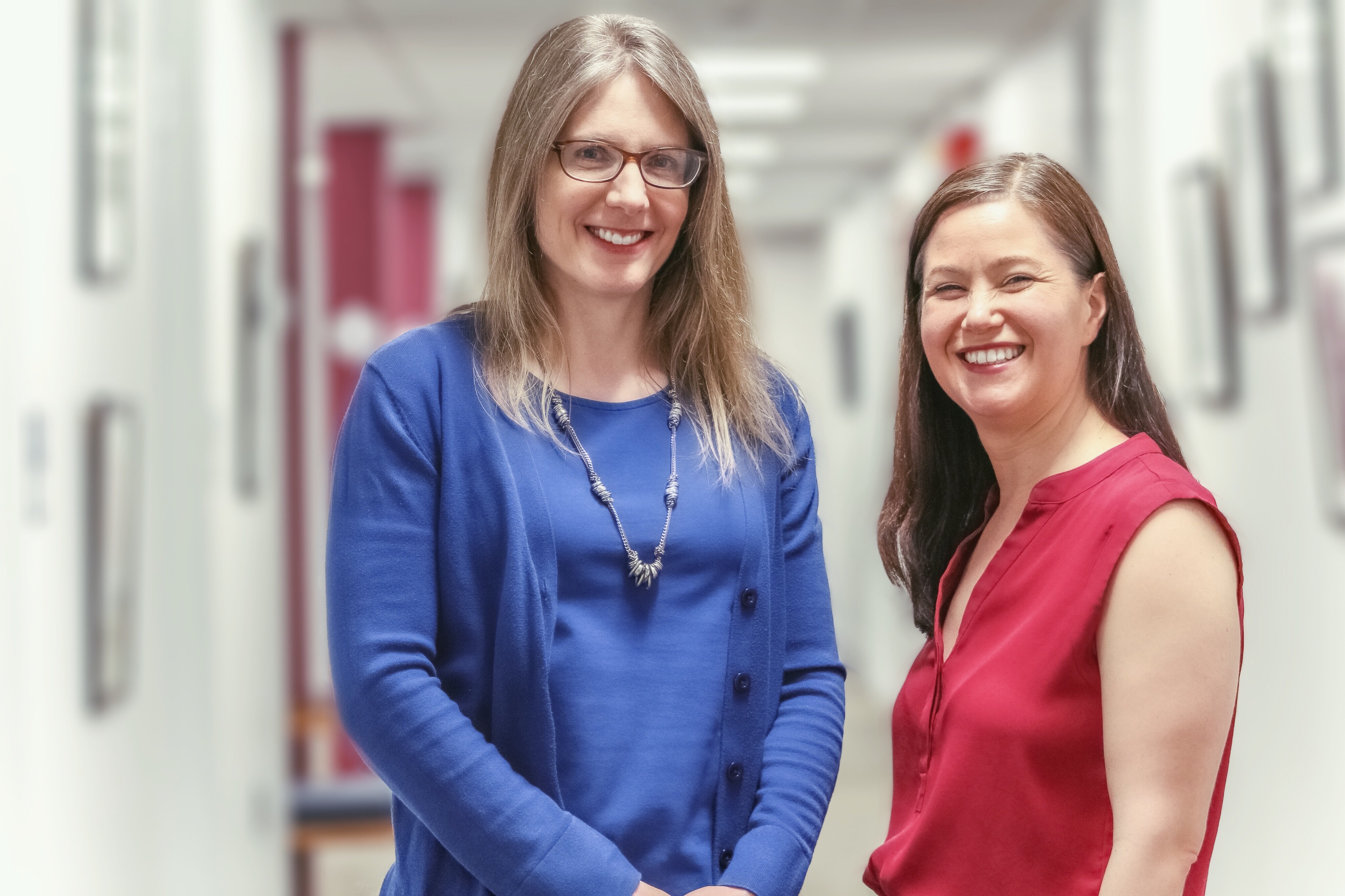Birds chirping, cars whizzing by and honking on a busy street, people talking and laughing, the melody of your favorite song – our daily world is full of and enhanced by a variety of sounds. But some people’s ability to hear these sonic details is hampered by noise-induced hearing loss (NIHL). A recent study conducted by the Centers for Disease Control and Prevention and National Institutes of Health found that 24 percent of adults in the U.S. have features in their hearing tests that are indicative of NIHL.
Professors Erika Skoe and Jennifer Tufts from the University of Connecticut Department of Speech, Language and Hearing Sciences have received $30,000 from the American Hearing Research Association to study the early, pre-clinical stages of NIHL in order to address this pressing public health concern.
Skoe and Tufts will use noise dosimeters, small sound recorders worn by the research subject, to measure individuals’ noise exposure. This method is significantly more objective than using questionnaires or interviews to ascertain daily patterns of noise exposure.
The study sample will consist of young adults with clinically normal hearing, including people such as musicians who are considered to be at risk for NIHL due to their frequent engagement in loud activities.
Previous research from Skoe and Tufts showed that young adults who are exposed to excessive noise levels have atypical neural responses to sound despite having clinically normal hearing. However, this research was only conducted over a one-week period. This new project will extend across several months to achieve a more complete picture of noise exposure patterns in young adults.
This kind of longitudinal data is essential for establishing the clinical applicability of the potential early biomarkers of NIHL Tufts and Skoe will be investigating, the researchers say.
For this new investigation, Skoe and Tufts are also teaming up with UConn Health associate professor of surgery Kouroush Parham, the innovator of a new technique for measuring inner-ear specific proteins in the blood for the assessment of hearing health. As a team, they will define the degree to which different biological markers of hearing are individually and collectively sensitive to variations in sound exposure that occur over different time scales.
The development of an enhanced screening battery for NIHL can allow for earlier detection that could in turn prevent further hearing decline. If people who have or are at risk for developing NIHL are identified early, they can receive the individually tailored audiological counseling and services they need.
Skoe is an assistant professor in the Department of Speech, Language and Hearing Sciences. She received her Ph.D. from Northwestern University. Her research focuses on the experiential and developmental factors that contribute to individual variation in how different brains process sound.
Tufts is an associate professor of audiology in the same department. She received her Ph.D. from Penn State University. Her research interests include hearing protection and enhancement devices, auditory fitness for duty, and music perception and hearing loss.



